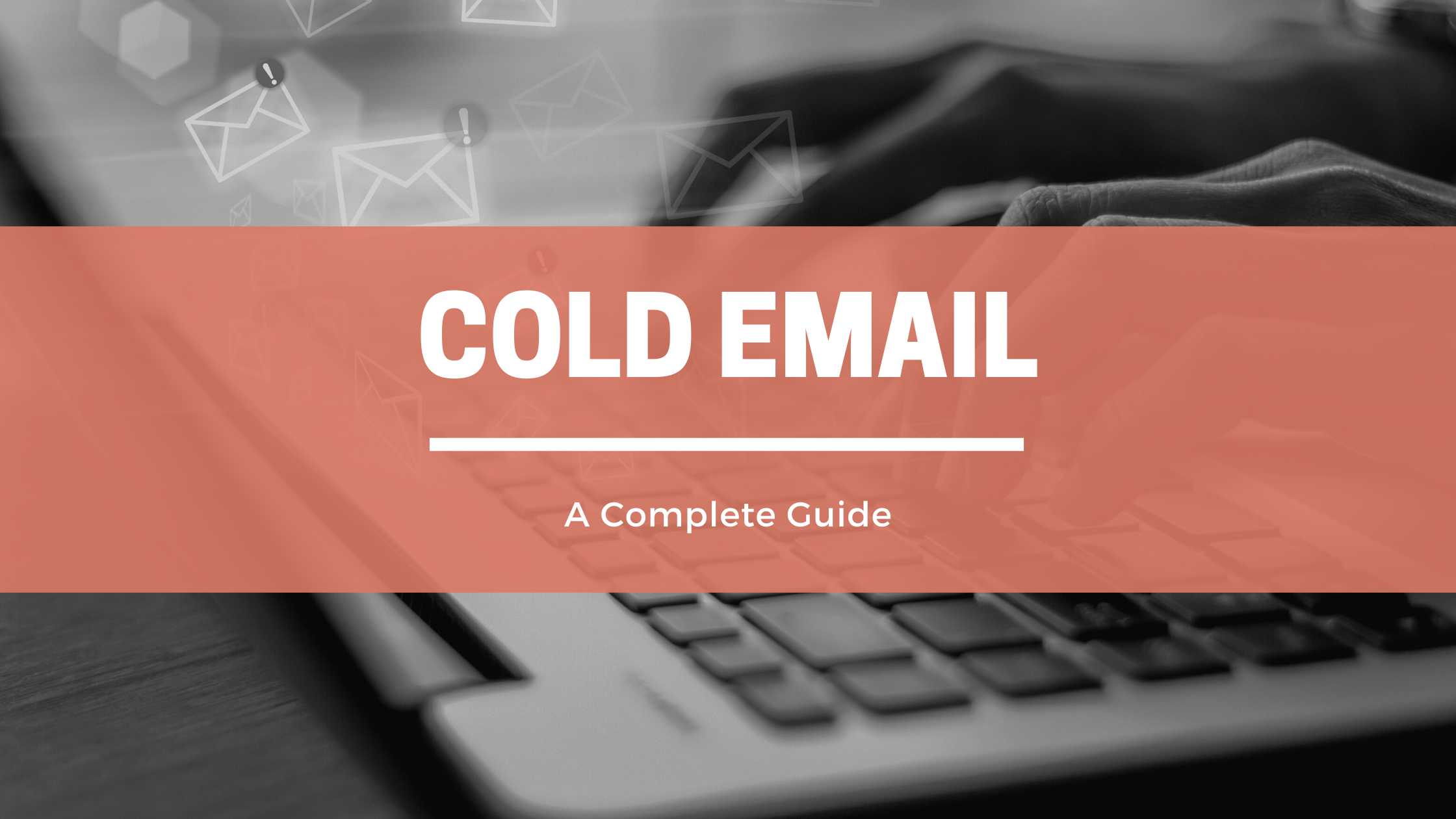Cold emailing can be a powerful tool for businesses looking to generate new leads and expand their customer base.
What is cold email?
Cold email is an unsolicited email that is sent to a recipient who has not previously expressed interest in the sender or their products/services.
What is an example of cold email?
An example of cold email would be a salesperson reaching out to a potential customer they found through a business directory or online search, introducing themselves and their company, and offering their products or services.
What is the importance of cold email?
The importance of cold email is that it can be a powerful tool for generating new leads and expanding a business’s customer base. However, it is important to be respectful of the recipient’s time and privacy, and to make sure that the email is targeted and relevant to their interests.
What are the types of cold email?
There are several types of cold emails, including:
- Introductory emails, which introduce the sender and their company to the recipient and offer their products or services.
- Prospecting emails, which are used to gather information about a potential customer and determine whether they would be a good fit for the sender’s products or services.
- Follow-up emails, which are sent after an initial contact or meeting with a potential customer to further nurture the relationship and move the sales process forward.
- Re-engagement emails, which are used to reconnect with past customers or leads who have gone inactive, and remind them of the sender’s products or services.
What is cold email skill?
Cold email skill refers to the ability to effectively compose and send cold emails that are well-written, targeted, and likely to generate a response. This includes understanding the recipient’s needs and interests, crafting a compelling subject line and message, and following best practices for email etiquette and marketing.
What is cold email technique?
Cold email technique refers to specific strategies or methods used to increase the likelihood of a cold email being successful. Some examples of cold email techniques include personalization, using a specific subject line that stands out, using a call-to-action and including a sense of urgency, using a specific structure of an email and testing different variations of emails.
What are the cold email principles?
Some principles of cold emailing include:
- Respect the recipient’s time and privacy by only sending relevant, targeted emails.
- Personalize the email as much as possible to make it more likely to be read and acted upon.
- Use a clear, compelling subject line and message that communicates the value of your product or service.
- Follow best practices for email etiquette, such as using a professional tone and avoiding spammy language or formatting.
What are the cold email methods?
Cold email methods include:
- Researching the recipient and their company to tailor the message to their needs and interests.
- Using a specific structure of the email, such as including a hook, a problem and a solution.
- Personalization, such as addressing the recipient by name and including information about their company or industry.
- Including a clear call-to-action and a sense of urgency.
- Following up with leads who have not responded to initial emails.
- Testing different variations of emails to see what works best.
What is cold email strategy?
Cold email strategy is the overall plan for how you will approach cold emailing and what specific tactics you will use to achieve your goals. A cold email strategy should include the overall goal of your cold emailing, the target audience, the message you want to convey, the timeline of your campaign, the metrics you’ll use to measure success, and the methods and techniques you’ll use to reach your target audience and achieve your goals.
What is cold email metrics?
Cold email metrics refer to the data and measurements used to track the performance of a cold email campaign and determine its effectiveness. Some examples of cold email metrics include open rate (the percentage of recipients who opened the email), click-through rate (the percentage of recipients who clicked on a link in the email), conversion rate (the percentage of recipients who took a desired action, such as signing up for a free trial or scheduling a meeting), and bounce rate (the percentage of emails that were undeliverable and returned to the sender).
What is cold email KPI?
Cold email KPI (Key Performance Indicator) are metrics that are used to measure the success of a cold email campaign and to track progress toward achieving specific goals. Examples of cold email KPI are open rate, click-through rate, conversion rate, response rate and lead generation rate.
What is cold email template?
Cold email template is a pre-written email that can be used as a starting point for crafting cold emails. These templates typically include a basic structure, such as an introduction, body, and conclusion, as well as placeholders for personalizing the email with the recipient’s name and other information. Cold email templates can help save time and ensure that emails are consistent in terms of tone and messaging. Some best practices for cold email templates include keeping them simple, keeping the subject line and body of the email clear and to the point, and avoiding using too much formatting or graphics.
What is cold email tone?
Cold email tone refers to the style and language used in a cold email, which should be professional, respectful, and appropriate for the recipient. The tone should be friendly and not too pushy, and should be tailored to the recipient’s industry and company culture. Cold email tone should be persuasive and must be able to present the product or service in a way that is beneficial to the recipient.
What is cold email software?
Cold email software is a type of program that helps users compose, send, and track cold emails. These software may include tools for personalization, scheduling, and tracking email opens and clicks, as well as analytics and reporting features. Some examples of cold email software include MailChimp, Constant Contact, and GetResponse.
What is cold email tool?
A cold email tool is a specific tool or feature that is designed to help with cold emailing. Some examples of cold email tools include email verifiers, which help ensure that an email address is valid, email finder that helps to find email addresses of potential leads, and email testing tools that allows you to test the design and content of an email before sending it to a large group of recipients. Additionally, Some cold email tool also includes functionality for A/B testing subject lines, scheduling follow-up emails, and tracking the performance of emails over time.
How to cold email
Here are some steps to help you with cold emailing:
- Research your target audience: Understand the recipient’s needs and interests, and tailor your message to them.
- Create a compelling subject line: Make sure the subject line is clear and attention-grabbing, and that it accurately reflects the content of the email.
- Personalize the email: Address the recipient by name and include information about their company or industry.
- Start with a hook: Use a sentence or two that immediately captures the recipient’s attention.
- Clearly state the problem: Identify the problem or pain point that your product or service can solve.
- Provide a solution: Explain how your product or service can help the recipient and what benefits they can expect to receive.
- Include a clear call-to-action: Ask the recipient to take a specific action, such as scheduling a meeting or signing up for a free trial.
- Use a professional tone and avoid spammy language: Use a polite and respectful tone and avoid using all caps, exclamation points, or other spammy formatting.
- Follow up: Follow up with leads who have not responded to initial emails.
How to learn cold email
To learn cold emailing, you can:
- Read books or articles on the subject.
- Take an online course or webinar.
- Join a networking group or community focused on cold emailing.
- Learn from experts in the field by attending conferences or workshops.
- Test different methods and techniques and track the results to see what works best for you.
How to write a cold email template
To write a cold email template:
- Start with a basic structure, such as an introduction, body, and conclusion.
- Use placeholders for personalizing the email with the recipient’s name and other information.
- Include a hook, a problem, a solution, and a call-to-action.
- Keep it simple and to the point.
- Avoid using too much formatting or graphics.
- Test different variations of the template and see which one gets the best results.
- Use best practices for cold emailing, such as personalization and clear call-to-action.
What is cold email ethics?
Cold email ethics refers to the principles and guidelines for conducting cold emailing in a respectful and responsible manner. This includes being respectful of the recipient’s time and privacy, only sending relevant and targeted emails, and avoiding deceptive or misleading practices. Cold email ethics also include being compliant with laws and regulations such as CAN-SPAM and GDPR.
What is cold email compliance?
Cold email compliance refers to the adherence to laws and regulations related to cold emailing, such as the CAN-SPAM Act in the United States, and the General Data Protection Regulation (GDPR) in the European Union. These laws set guidelines for sending commercial email, including requirements for obtaining consent, providing opt-out mechanisms, and including accurate sender information.
What tone of voice is best for sales?
When it comes to tone of voice for sales emails, a conversational, friendly, and professional tone is best. The tone should be persuasive, but not too pushy. The goal is to build a relationship with the recipient and to show that you understand their needs and interests. The tone should be tailored to the recipient’s industry and company culture, and should be respectful and appropriate.
Is cold email a good skill?
Cold email can be a good skill to have, as it can be a powerful tool for generating new leads and expanding a business’s customer base. However, it is important to use the skill in an ethical and respectful manner, and to be mindful of the recipient’s time and privacy. Cold emailing can be effective if done correctly, but it may require a significant investment in terms of time and resources, especially when starting out.
What is cold email vs warm email?
Cold email vs warm email is a distinction between unsolicited emails and solicited emails. Cold email is an unsolicited email that is sent to a recipient who has not previously expressed interest in the sender or their products/services. Warm email, on the other hand, is an email that is sent to someone who has previously shown interest in the sender or their products/services. Warm emails are typically more likely to generate a response, as the recipient has already expressed some level of interest.

